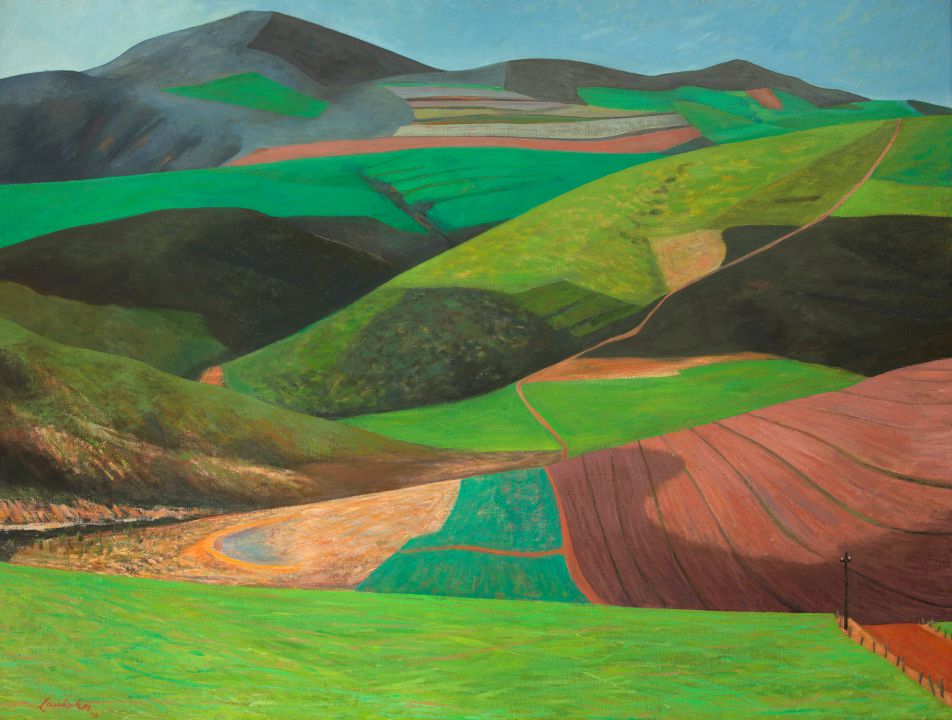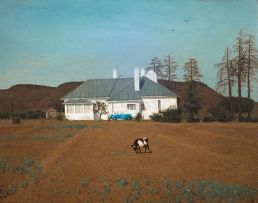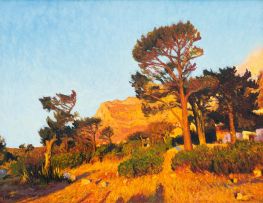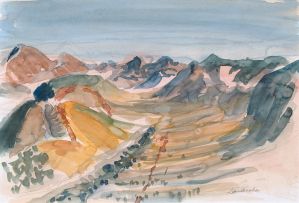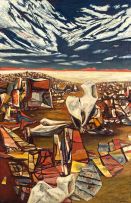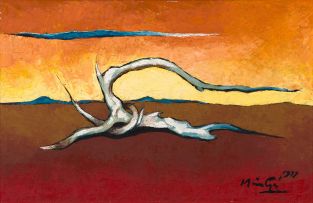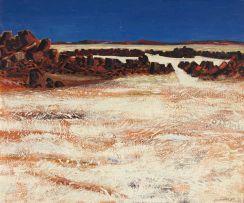Important South African & International Art, Decorative Arts & Jewellery
Live Auction, 6 March 2017
Important South African and International Art - Evening Sale
Incl. Buyer's Premium & VAT
About this Item
signed and dated '96; signed, dated and inscribed with the title, dimensions and artist's address on the reverse
Notes
Erik Laubscher returned to South Africa from Paris in 1951. After a period of adjustment, in which he continued to paint in the School of Paris style, Laubscher discovered his true subject: the South African landscape. It was a trip to the Bushman's River near Kenton-on-Sea that set him off on his decades-spanning trajectory describing the land in geometrical bands of colour. Laubscher's earliest work in this style, from the mid to late 1960s, shunned perspective. "The moment you use perspective your eye travels to a certain point and there it stops and the painting becomes static," he told the Cape Times in 1965.1 Artist opinions are changeable. This lot, painted three decades later, shows Laubscher still preoccupied with the Cape's landscapes, albeit now with perspective. Aside from the obvious use of perspective in this verdant portrayal of an Overberg farming landscape, this work is noteworthy for its colour palette. Laubscher's colours are vivid, and yet, for all the luminescence of especially his greens, it is a mimetic painting. Contours, borders, dams, gravel tracks and evidence of human labour are pictured in a receding plane. Laubscher thought European painterly styles were inadequate for conveying South Africa's landscapes, which he became acquainted with during his years as a travelling paint salesman. "The Swartland and Overberg regions have dimensions, rhythms and character peculiar to themselves," he told framer and collector Joe Wolpe in 1967.2
- Stephen Gray. (1970) 'Erik Laubscher and Landscape', in Lantern, March, Vol. XIX, No.3, page 15.
- Ibid., page 14.
Provenance
Acquired directly from the artist by the current owner.
Literature
Hans Fransen. (2009) Erik Laubscher, A Life in Art, Stellenbosch: SMAC Art Gallery. Illustrated in colour on page 226.
